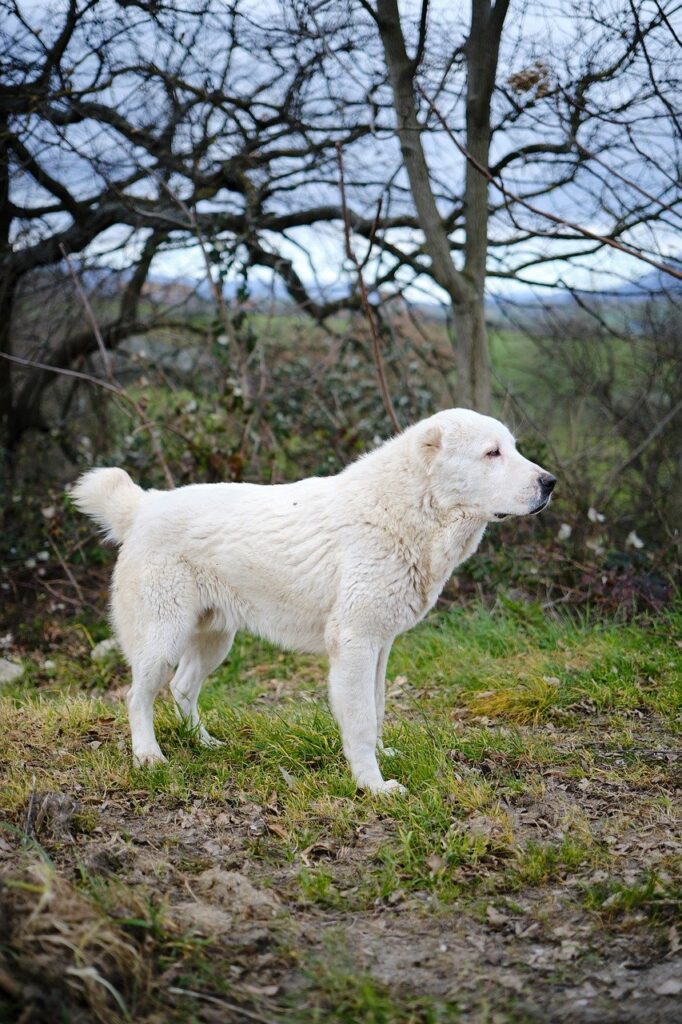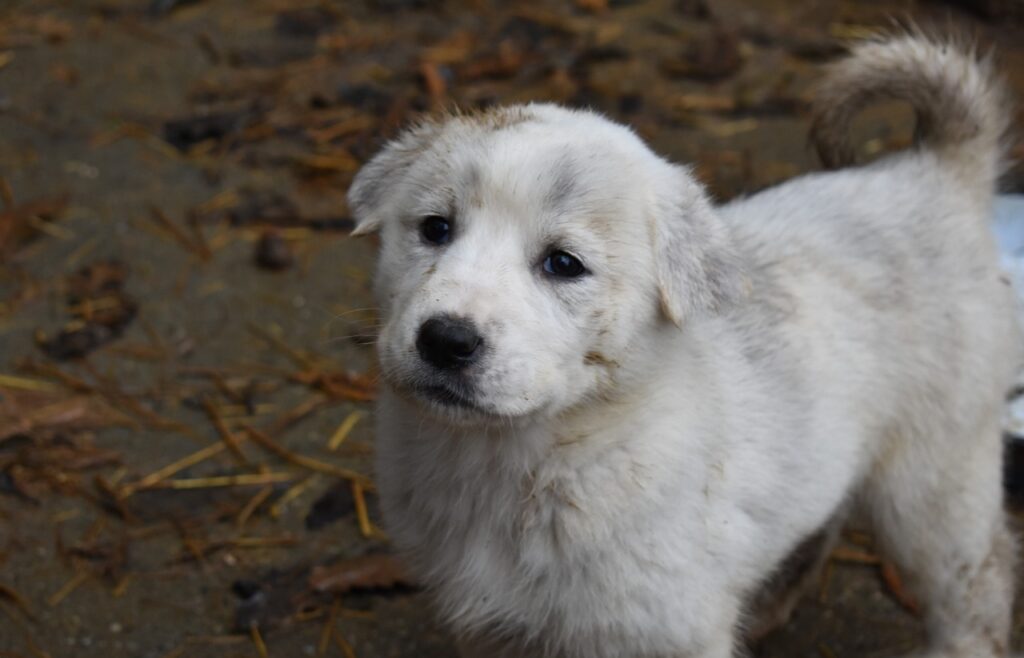
The Central Asian Shepherd, also known as the Alabai, is a breed steeped in history and tradition. Renowned for its loyalty, courage, and resilience, this ancient guardian dog has protected livestock and families for centuries. In this article, we’ll dive deep into everything you need to know about the Central Asian Shepherd – from its origins and traits to training tips and care essentials.
Origins of the Central Asian Shepherd
The Central Asian Shepherd’s history spans over 4,000 years, making it one of the oldest dog breeds in the world. Originating in the vast regions of Central Asia, including modern-day Kazakhstan, Uzbekistan, Turkmenistan, and surrounding areas, these dogs were bred by nomadic tribes to protect flocks and homes from predators such as wolves and bears

A Breed Built by Nature
Unlike many modern breeds shaped by human intervention, the Alabai developed naturally. Harsh climates, rugged terrains, and the constant threat of predators honed their instincts and physique, creating a dog that embodies strength and endurance.
The Role of Tradition
Central Asian Shepherds hold cultural significance in their regions of origin. Often regarded as symbols of pride and protection, they are celebrated in folklore and even local festivals.
Physical Characteristics
The Central Asian Shepherd is an impressive sight. Their muscular build and commanding presence make them an excellent deterrent to intruders while their calm demeanor conveys confidence.
Size and Weight
- Males: Height ranges from 28 to 32 inches; weight typically falls between 110 and 170 pounds.
- Females: Slightly smaller, standing 24 to 28 inches tall and weighing 80 to 140 pounds.
Coat and Colours
The breed has a dense double coat, providing protection against extreme weather. Common colours include:
- White
- Fawn
- Brindle
- Black-and-white
Lifespan
With proper care, Central Asian Shepherds live between 12 and 15 years, which is impressive for such a large breed.
Personality and Temperament
A Natural Protector
Central Asian Shepherds are natural guardians. They are fearless in the face of danger but remain calm and composed around their families. Their protective instincts are unmatched, making them excellent watchdogs.
Loyal and Independent
While fiercely loyal to their families, Alabais are also known for their independence. This trait stems from their traditional role as livestock guardians, where they had to make decisions without human direction.
Good with Children?
When socialized properly, Central Asian Shepherds are incredibly gentle with children. Their patience and protective nature make them excellent companions for families.

Training the Central Asian Shepherd
Early Socialization Is Key
Due to their protective instincts, it’s crucial to socialize Alabais from a young age. Expose them to various environments, people, and animals to ensure they grow into well-rounded dogs.
Firm but Gentle Training
These dogs respond best to consistent and positive reinforcement techniques. Harsh training methods can backfire, as they are intelligent and may resist forceful commands.
Focus on Obedience
Basic commands like “sit,” “stay,” and “come” are essential for managing this strong-willed breed. Professional training classes can be beneficial for first-time owners.
Caring for Your Central Asian Shepherd
Diet and Nutrition
Feeding your Alabai a balanced diet is vital to their health. Opt for high-quality dog food rich in protein, or consider a raw diet if it suits their needs.
- Protein: Supports muscle maintenance.
- Calcium: Strengthens their large bones.
- Healthy fats: Keep their coat shiny and skin healthy.
Exercise Needs
Despite their size, Central Asian Shepherds are not overly energetic. Daily walks and moderate playtime suffice to keep them healthy and happy. A securely fenced yard is ideal for letting them roam safely.
Grooming Requirements
Their double coat requires regular brushing to minimize shedding and prevent matting. During shedding seasons, which occur twice a year, daily brushing is recommended.
Health Concerns
Common Issues
While generally robust, Central Asian Shepherds are prone to a few health problems:
- Hip Dysplasia: A common issue in large breeds.
- Bloat (Gastric Torsion): Can be life-threatening if not addressed quickly.
- Joint Problems: Due to their size and weight.
Preventive Care
- Regular Vet Checkups: Early detection of health issues.
- Joint Supplements: Especially important as they age.
- Weight Management: Prevents added stress on joints.

Is the Central Asian Shepherd Right for You?
Ideal Owners
- Experienced Dog Owners: Their size, strength, and independence require confident handling.
- Families with Space: A large yard or rural property suits their needs best.
- Those Seeking Protection: Their guarding instincts are unparalleled.
Potential Challenges
- Not for Apartment Living: They thrive in open spaces.
- Requires Time and Commitment: From training to grooming, this breed demands attention.
- Early Socialization Is Non-Negotiable: Skipping this step can lead to behavioural issues.
Real-Life Stories: Alabai in Action
The Guardian of the Flock
In the mountainous regions of Turkmenistan, a Central Asian Shepherd named “Boran” became a local legend after fending off a pack of wolves threatening a shepherd’s flock. His bravery and determination saved the lives of countless sheep and solidified his reputation as an extraordinary protector.
A Family’s Best Friend
One suburban family in the UK shares their experience with their Alabai, “Mila.” While initially hesitant about the breed’s size, they were won over by Mila’s gentle nature with their young children and her unwavering loyalty.
Frequently Asked Questions
Are Central Asian Shepherds aggressive?
Not inherently. While they are protective, proper training and socialization ensure they distinguish between genuine threats and harmless situations.
How much does a Central Asian Shepherd cost?
Prices vary, but a well-bred puppy typically costs between £1,000 and £2,000.
Do they get along with other pets?
With early socialization, they can coexist peacefully with other animals. However, their guarding instincts may cause issues if not properly managed.
Conclusion
The Central Asian Shepherd is more than just a dog—it’s a devoted protector, a loyal friend, and a symbol of strength and resilience. Owning one requires dedication, but the rewards are immeasurable. If you’re seeking a companion that embodies loyalty, bravery, and independence, the Alabai might just be the perfect fit for your family.
By understanding their needs and embracing their unique traits, you’ll build a bond that stands the test of time.
Unlock your dog’s hidden genius with fun and effective brain training games – transform behavior and boost intelligence today! CLICK HERE